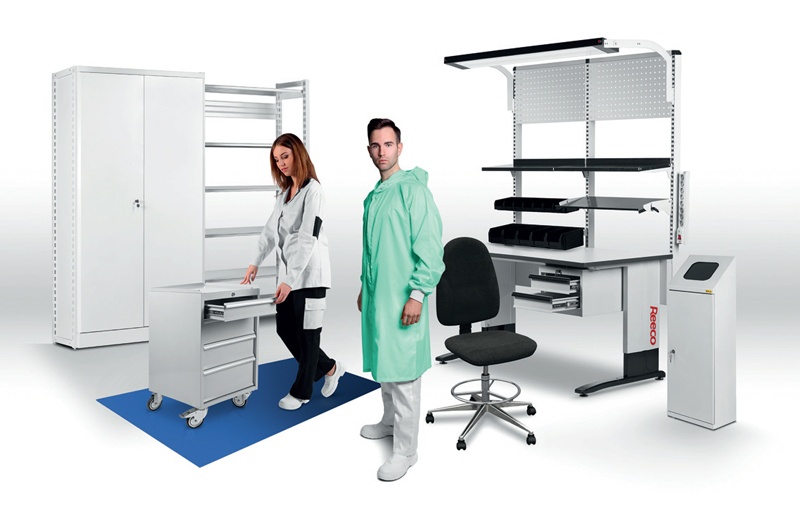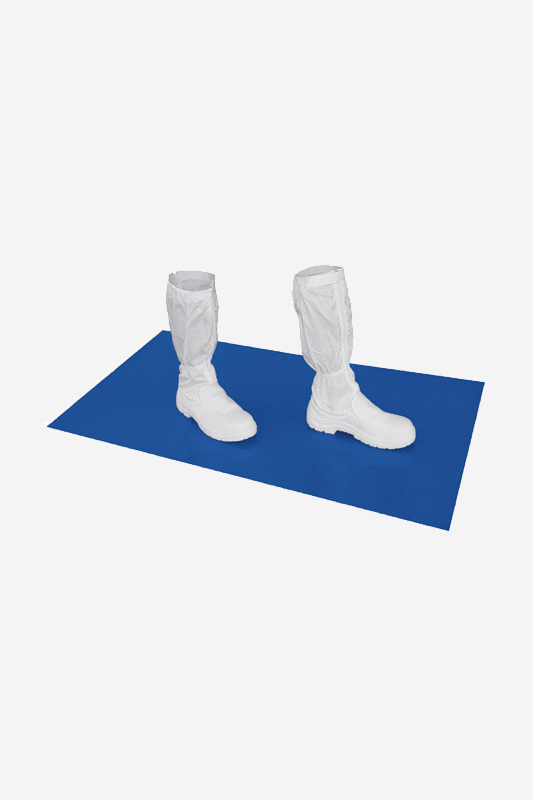The progressive miniaturization and increasing systemic complexity of electronic devices are making components, modules and devices more sensitive to electrostatic discharge. Protecting production and service from the effects of such discharges brings many benefits. Reducing production costs as a result of fewer defective components, increasing quality and reliability, and consequently increasing customer satisfaction are just some of them.
Electrostatic discharge is caused by a number of factors, such as poor quality of personnel protective clothing, or its inadequate selection and handling. Other factors can be rubbing synthetic parts of clothing, moving plastic containers around the hall, or unwinding the plastic tape when packing products.
The issue of air humidity, temperature in the room, i.e. atmospheric conditions during the electrification process, which can significantly affect the generated values of electrostatic voltages, is also important. In a typical working environment, the potentials exceed 10 kV, but at low humidity (below 20%) they can be as high as 30 kV.
Such high values can cause the electronic components and circuits assembled with them to be damaged at every stage of the process: production, testing, servicing or packaging. A huge problem here is the limited ability to detect and eliminate elements damaged by ESD (Electro Static Discharge), because the symptoms of damage remain hidden for a long time. The most disadvantageous for the company is the fact of revealing such a defect already after the product is put on sale.
EPA ZONE
Even trained ESD coordinators, whose job it is to communicate knowledge of antistatic issues and to improve staff competence in the field of occupational safety in the electronics industry, are no guarantee of full protection when mistakes are made at the basis. And the basis of this is a safe zone designed for work with sensitive components by eliminating electrostatic discharges.
This area, called the EPA (Electrostatic Protected Area), is where the maximum electrical field strength is 100 V/cm. Such an area may occupy a designated part of a room or constitute a completely separate zone, which should be considered as the current trend. The entrance and exit from such a zone should be secured by appropriate gates to the EPA zone and the room itself should be marked with appropriate labels with pictograms and information boards.
WORKER IN THE ZONE
In order to protect the workstation from high-value electrostatic charges it is necessary to use appropriate conductive and dispersing materials. It is important to use an earthing system that equalizes the electrical potential of components and personnel and to train personnel to follow the recommendations for electrostatic protection. One of the most important elements of earthing a person working with ESD-sensitive components is an antistatic wristband. It is an effective yet economical way of discharging the charges.
The cost of such a band starts from 9-10 PLN and, depending on the accessories, ends at 50-60 PLN. Connected by a copper cable with a ground or earthing point, the so-called EBP (Earth Bonding Point) prevents the transfer of charges. A common mistake is conviction of sufficient protection only by using a hand band or antistatic mat on the table top.
Meanwhile, all international standards, including EN 61340-5-1, underline the need to use special clothing directly at the workplace and in every EPA zone.
Jackets, jumpers, T-shirts, pants, overalls – the choice of clothes is very wide. It is worth to rely on the quality of manufacturing in this respect. Threads sticking out of seams, badly made antistatic fabric, which will lose its properties after a few washes, may become a threat affecting the quality of manufactured products.
In the case of working with particularly sensitive systems, it is also important to remember about antistatic gloves with conductive fibres. The operator’s clothing should be completed with shoes made of conductive material, which must remain in contact with an antistatic mat or a conductive (and earthed) floor maintained with special chemical products to ensure full protection, as standard cleaning products leave an insulating layer.
ZONE EQUIPMENT
Shielding, conductive, charge dissipating and insulating materials shall be used to protect against ESD effects. These materials are classified according to their surface resistance. Furniture is the basis of EPA areas.
All structural elements of the furniture must be made of antistatic materials, coated with special antistatic paints.
Maintaining cleanliness of rooms and the workplace is required to ensure proper protection against static electricity. The elements, devices, tools and accessories used must also be made of antistatic materials in accordance with the standards.
Tools to assess the functioning of the protective measures are necessary to carry out checks. Resistance testers working with appropriate electrodes are absolutely necessary. Measurements must be carried out under the conditions and in the manner described in the standards. One of the most important environmental factors in ESD protection is relative humidity. Low air humidity (below 30%) favours the accumulation of electric charges, so it is important to measure ambient temperature and relative air humidity.
In such cases, ionizers are used. They shall also be used where earthing is not possible through a system of appropriate wiring or where such wiring makes operation impossible or significantly impedes. Losses caused by ESD to an electronics manufacturer/server can be extremely costly and yet difficult to locate and detect.
Investing in comprehensive, well thought-out protection is therefore one of the primary tasks facing decision-makers in most electronics companies.
DOWNLOAD PDF (IN POLISH)


